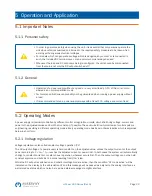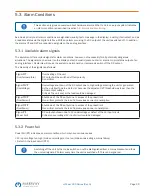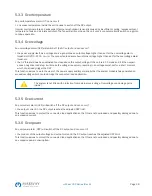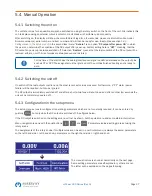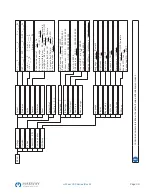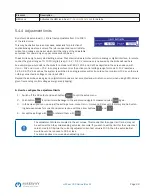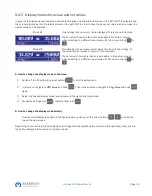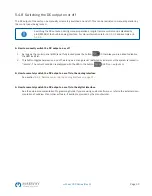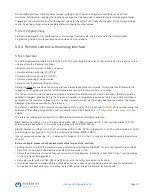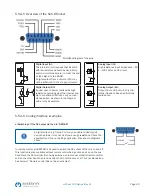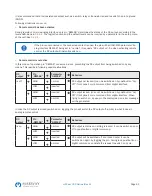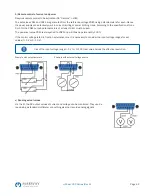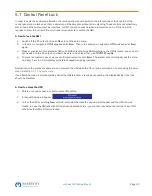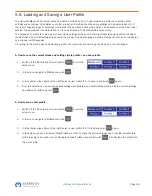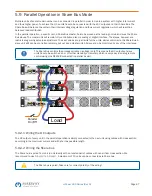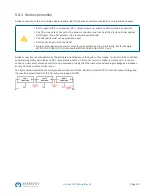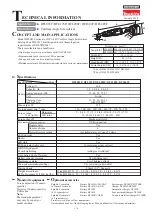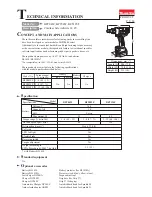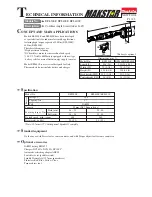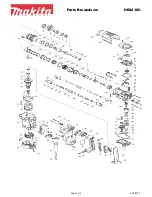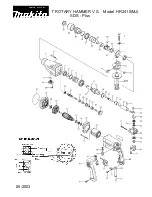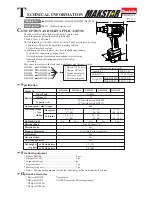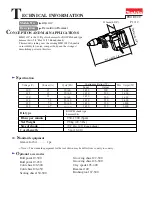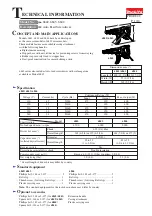
Page 37
mPower 300 Series (Rev G)
Via the digital interface, primarily the set values (voltage, current, power) and system conditions can be set and
monitored. Furthermore, various other functions are supported as described in separate programming documentation.
Changing to remote control will retain the last set values for the system until these are changed. Thus a simple voltage
control by setting a target value is possible without changing any other values.
5.5.3.3 Programming
Programming details for the interfaces, the communication protocols etc. are to be found in the documentation
Programming Guide
which is available as a download from our website.
5.5.4 Remote control via the analog interface
5.5.4.1 General
The built-in, galvanically isolated (up to 1500 V DC), 15-pole analog interface (short:
AI
) is located on the rear side of the
unit and offers the following functions:
•
Remote control of current, voltage and power
•
Remote status monitoring (CC/CP, CV)
•
Remote alarm monitoring (OT, OVP, PF)
•
Remote monitoring of actual values
•
Remote on/off switching of the DC output
Setting the
three
set values via the analog interface always takes place concurrently. This means that for example the
voltage can not be given via the AI and current and power set by the rotary knobs, or vice versa.
The OVP set value and other supervision (events) and alarm thresholds cannot be set via the AI and therefore must be
adapted to the given situation before the AI is put in operation. Analog set values can be fed in by an external voltage or
generated by the reference voltage on pin 3. As soon as remote control via the analog interface is activated, the values
displayed will be those provided by the interface.
The AI can be operated in the common voltage ranges 0–5 V and 0–10 V in each case 0–100% of the nominal value. The
selection of the voltage range can be done in the system setup. See section
5.4.3. Configuration in the setup menu
for
details.
The reference voltage sent out from Pin 3 (VREF) will be adapted accordingly and is then:
0-5 V
: Reference voltage = 5 V, 0–5 V set values (VSEL, CSEL, PSEL) correspond to 0–100% nominal values, 0–100%
actual values correspond to 0–5 V at the actual value outputs (CMON, VMON).
0-10 V
: .Reference voltage = 10 V, 0–10 V set values (VSEL, CSEL, PSEL) correspond to 0–100% nominal values, 0–100%
actual values correspond to 0–10 V at the actual value outputs (CMON, VMON).
Input of excess set values (e.g. >5 V in selected 5 V range or >10 V in the 10 V range) are clipped by setting the set value
at 100%.
Before you begin, please read these important notes for use of the interface:
•
Analog remote control of the system must be activated by switching pin “REMOTE” (5) first. Only exception is pin REM-
SB, which can be used independently since KE firmware version 2.03
•
Before the hardware is connected that will control the analog interface, it shall be checked that it can’t provide voltage
to the pins higher than specified
•
Set value inputs, such as VSEL, CSEL and PSEL, must not be left unconnected (i.e. floating)
•
It is always required to provide all three set values at once. In case any of the set values is not used for adjustment, it
can be tied to a defined level or connected to pin VREF (solder bridge or different), so it gives 100%

